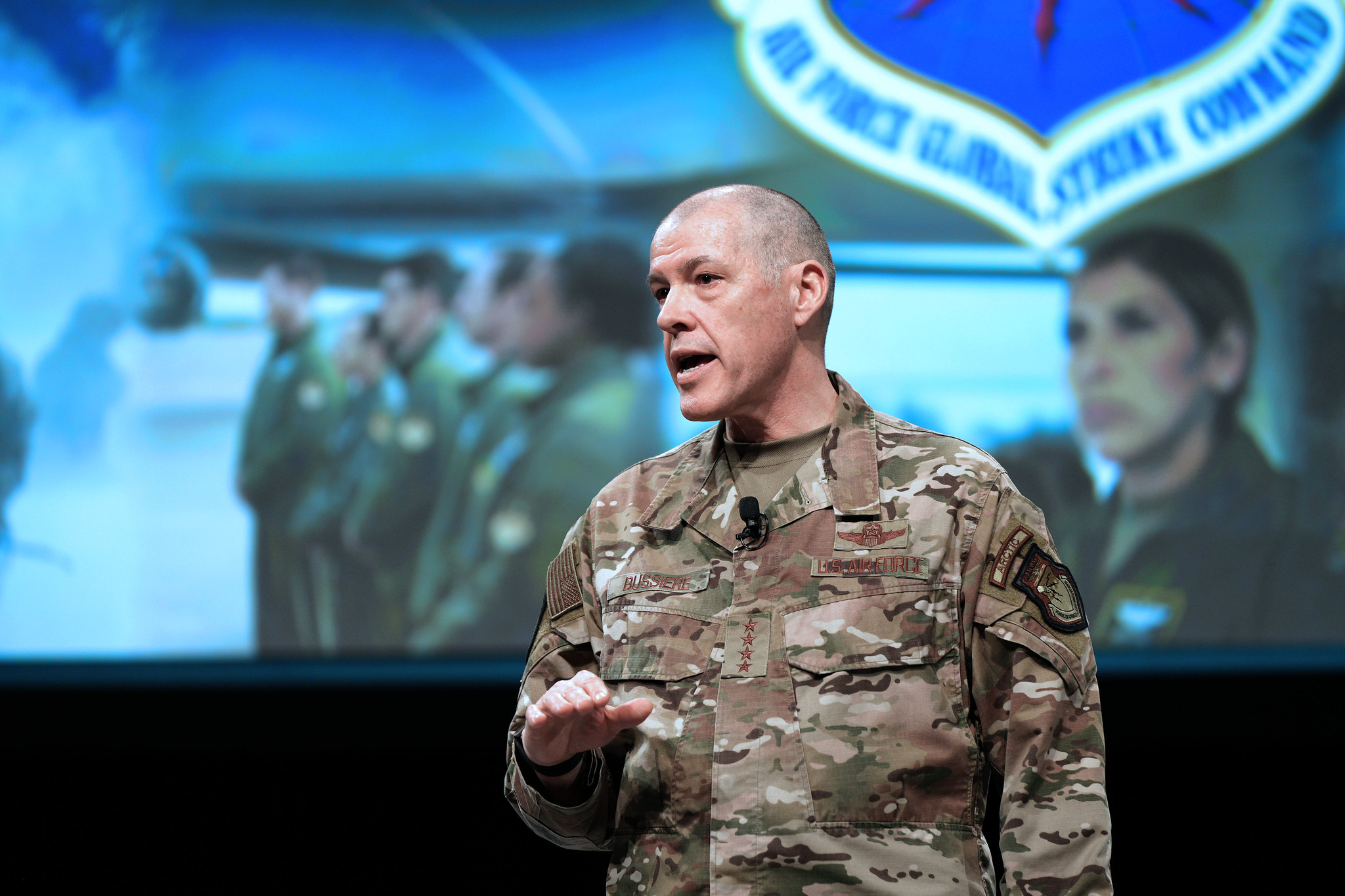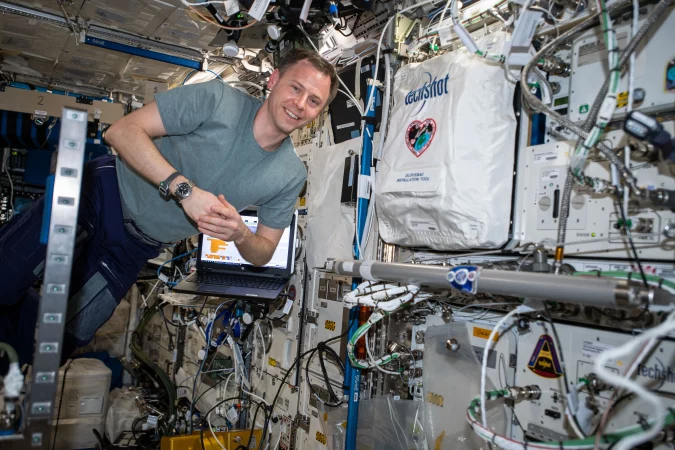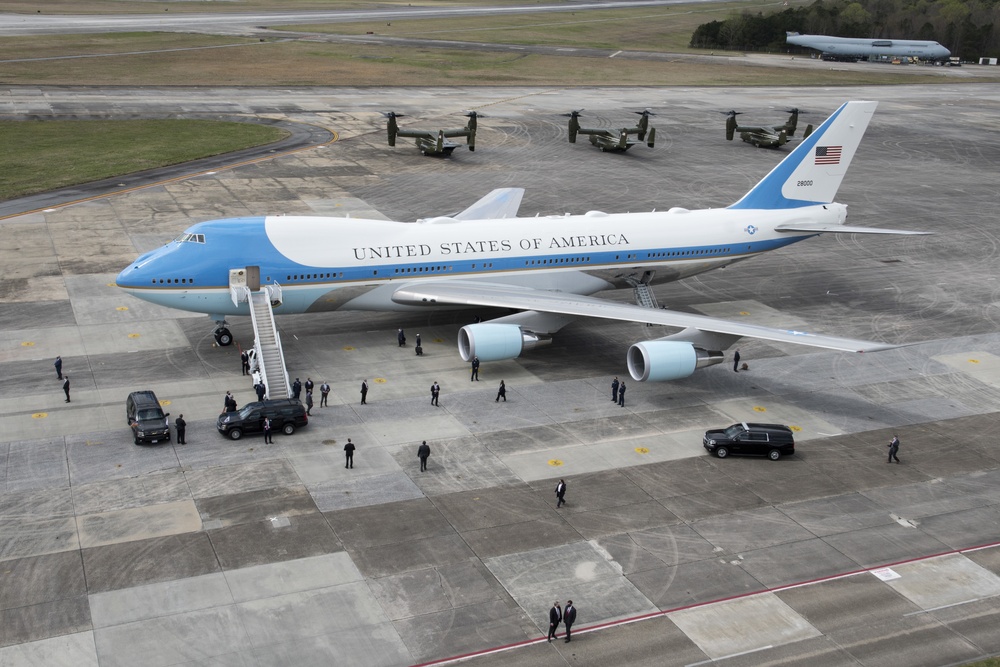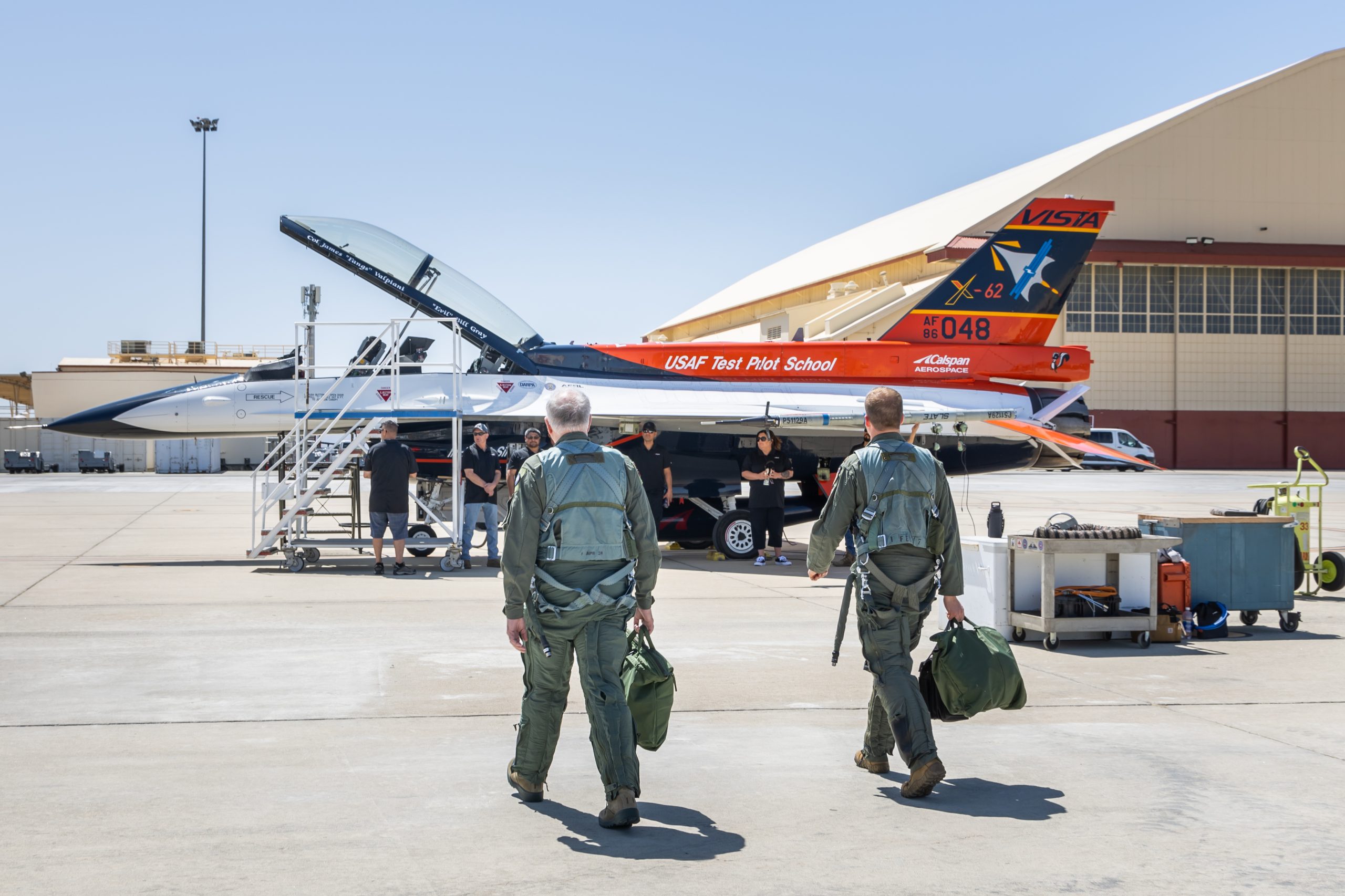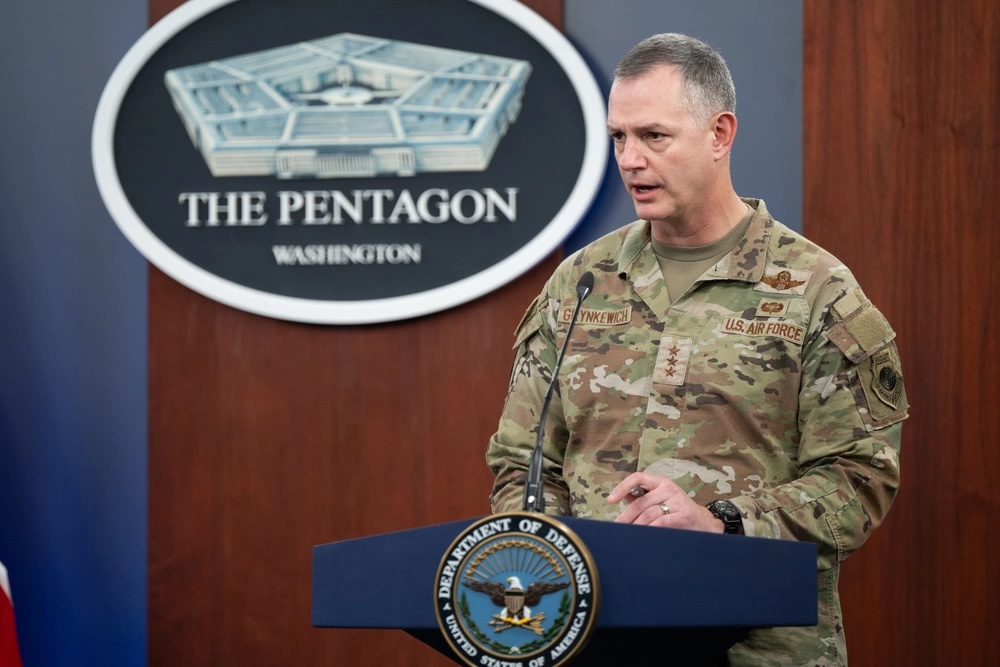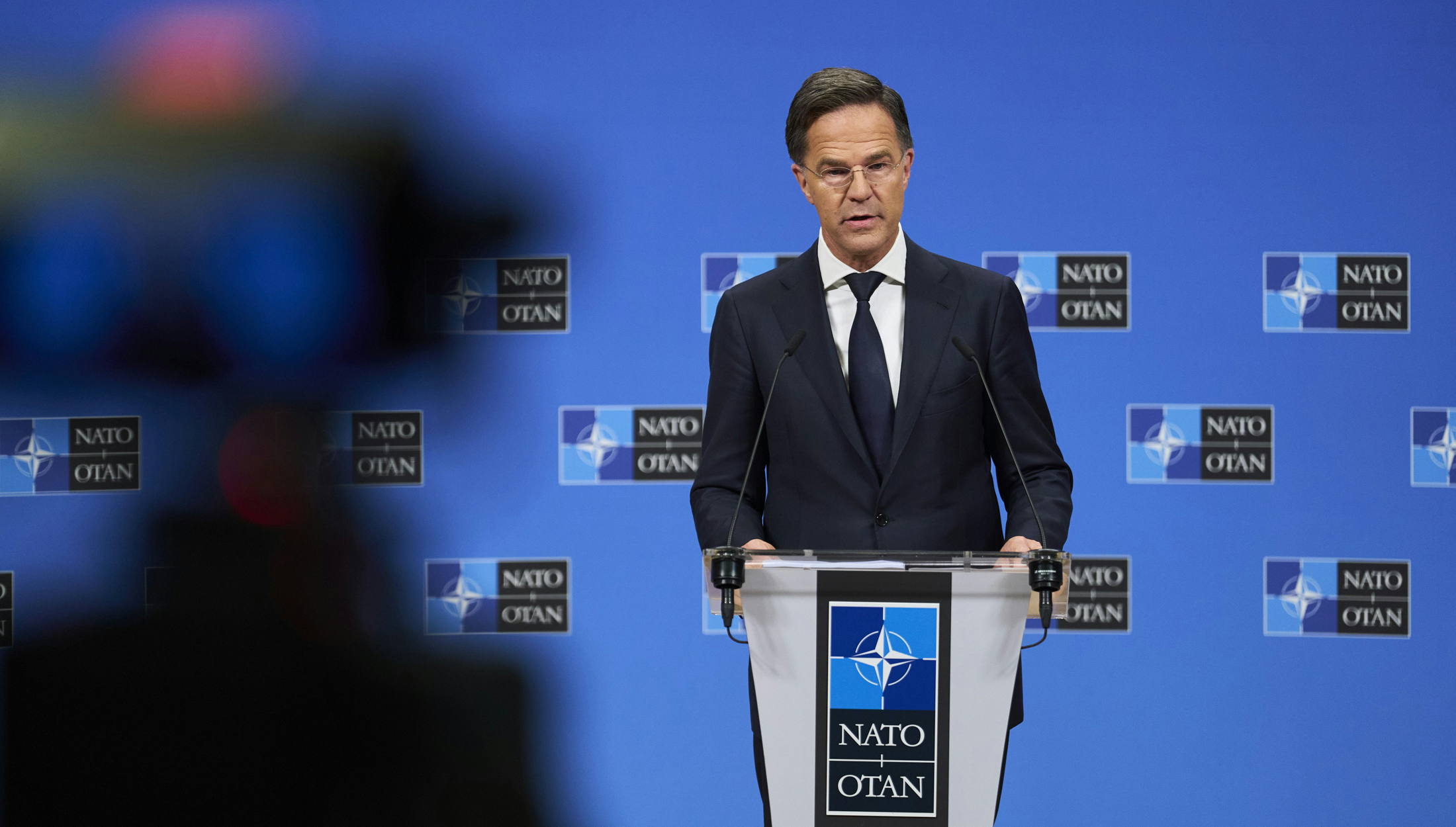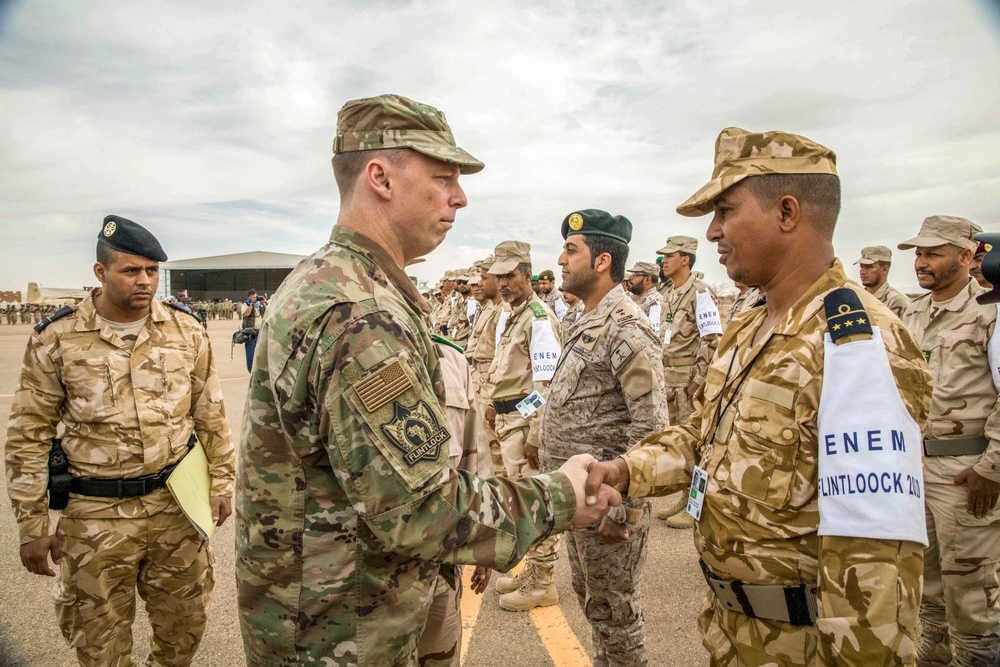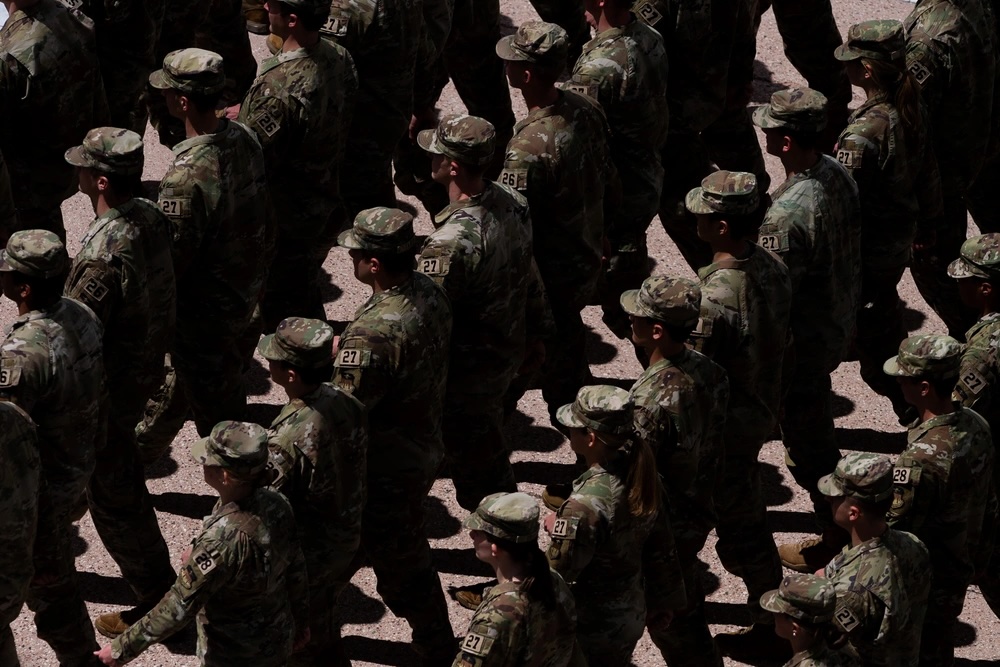The Air Force is ready to add more nuclear warheads to its bomber aircraft and underground missiles if ordered to do so when a key arms control treaty expires next year, its top nuclear officer said June 5.
Air Force Global Strike Command boss Gen. Thomas A. Bussiere, during a discussion of the U.S. strategic arsenal hosted by the Atlantic Council, said that when the New START Treaty ends in February 2026, “there may be a direction to provide additional capacity, both on the land leg and the bomber leg.”
“If directed, we are ready and prepared to execute” that order, he said. “We have the capability and capacity to do it.”
Bussiere also talked about the likely need for more than 100 stealthy, long-range B-21 Raider bombers, and the expansion of America’s nuclear force in response to the rise of new nuclear powers.
New START, which entered into force in 2011, limits the number of launchers—like a plane, submarine or missile—with nuclear warheads that can be deployed by the U.S. and Russia. The 400 deployed Minuteman III intercontinental ballistic missiles were designed to carry three warheads but use only one apiece to comply with the treaty.
Global Strike periodically test-launches the missiles with multiple independently targetable reentry vehicles (MIRVs), which would each carry a nuclear warhead in a real attack. It most recently did so in November from Vandenberg Space Force Base in California.
A spokesperson for the command said that just because the Air Force could put missiles with multiple warheads on alert if no longer bound by a treaty, that doesn’t mean it will. The Air Force could also put more nuclear weapons on its B-2 Spirit and B-52 Stratofortress bombers if funded and directed to, the spokesperson said, but “specific postures and plans would be directed by the National Command Authority,” comprised of the president and defense secretary.
The U.S. and Russia in February 2021 agreed to extend New START for five years, but Russia announced in 2023 that it didn’t intend to continue the deal past 2026.
Until February, “we are encumbered by the restrictions and limits” of New START, Bussiere said. “There is no follow-on arms control.”
Modernizing Missiles
As the end of New START draws closer, efforts to deploy a new generation of nuclear weapons face fresh criticism in Washington. Among them is the Sentinel ICBM, which would replace Minuteman III missiles and can also carry multiple warheads.
The Pentagon found last summer that the troubled initiative was over budget by 81 percent, for an estimated cost of nearly $141 billion, and delayed by three years. The Air Force is restructuring the program to avoid future cost overruns that could trigger additional congressional oversight and slowdowns.
Lawmakers on both sides of the aisle on June 5 pressed Air Force officials to show they’re taking the Sentinel program seriously. The new ICBM is the program that has occupied the most of his time since becoming secretary last month, Air Force Secretary Troy E. Meink said. It’s one of his top three priorities, he said, if not the highest.
“We’re doing everything we can to get it back on track,” he said.
Bussiere said the so-called Nunn-McCurdy breach was largely spurred by the costs of building Sentinel launch facilities and command-and-control infrastructure—effectively, the sheer scope of the civil engineering effort. While the program remains delayed by up to two years, he said, other aspects of the program “are ongoing and going well.”
“I’m encouraged by the activities that are going on right now between industry, our ops and maintenance professionals, and the acquisition professionals,” Bussiere said. “We are seeing some great opportunities in the restructure of the program.”
House Armed Services Committee Chairman Rep. Mike Rogers (R-Ala.) questioned why the service has moved $1.2 billion provided for the Sentinel program to fund other priorities in fiscal 2025, and said he’s concerned the new missiles won’t be ready in time to replace the Minuteman IIIs before they’re too old to be effective.
At the Atlantic Council event, Bussiere said Global Strike has a “very deliberate plan” for keeping enough Minuteman III missiles available to meet the minimum number needed for deterrence while transitioning missile launch facilities and control centers to the Sentinel program. It is “a national imperative” to keep Minuteman III functional until Sentinel can replace it, he said.
This is only the second time the U.S. has sought to replace its nuclear enterprise, and the first since the 1980s. Global Strike is now juggling the complex and expensive ICBM modernization at the same time as it brings on the B-21 to replace the B-1 and B-2 bombers, a new air-launched cruise missile and other pieces of the strategic arsenal. That challenge will “take an effort and a lift from everybody,” Bussiere said.
“If we had to do it again,” Bussiere said, “we might look at maybe doing one leg [of the nuclear triad] every 10 years, versus all three legs at the same time.”
He hinted the U.S. may need a more robust nuclear force structure to counter future threats. Since 2010, China has become a near-peer nuclear power to the U.S. and Russia and is continuing to bolster its strategic arsenal, while North Korea has also built up its nuclear forces. North Korea is receiving nuclear missile guidance know-how from Russia in exchange for sending troops and other aid to Russia for its war against Ukraine, Bussiere said.
In February, President Donald Trump said he wants to pursue arms control talks with Russia and China and bemoaned the amount of money the U.S. plans to spend on new weapons.
“There’s no reason for us to be building brand new nuclear weapons, we already have so many,” Trump told reporters in the Oval Office. “You could destroy the world 50 times over, 100 times over. And here we are building new nuclear weapons, and they’re building nuclear weapons.”
“We’re all spending a lot of money that we could be spending on other things that are actually, hopefully much more productive,” Trump said.
The nonpartisan Congressional Budget Office projected in April that operating and modernizing U.S. strategic forces will cost $946 billion through 2034; other estimates reach $1.5 trillion over the systems’ lifetimes. Proponents of the effort argue keeping other nuclear-armed nations at bay is worth the price.
Asked June 5 to respond to Trump’s comments, Secretary Meink told lawmakers nuclear deterrence is one of the highest priorities for America’s national defense.
“I have never and do not believe that I disagree with the president on anything,” Meink said at the House Armed Services Committee hearing. “I think we’re supporting his priorities, which is, support the homeland. And this is one of the programs that we will use to support the homeland.”
Growing the Bomber Force
The rise of other nuclear powers has revived the question of how large America’s nuclear arsenal, particularly its bomber fleet, should be. Bussiere maintains the Air Force can most easily accommodate growth in its bomber force, which can also be used for non-nuclear strike missions.
The Air Force plans to buy at least 100 B-21s, which cost around $692 million apiece as of 2022. But the service is “starting to see a number of combatant commanders, a number of members of the [Defense] Department, as well as Congress, asking the question, ‘Is 100 enough?’” Bussiere said.
The idea of boosting the buy to 145 B-21s is “predicated on an earlier threat,” he said.
“We need to explore . . . what the right number is,” Bussiere said. “The good news is, I think we have time to make that decision.”
The massive Republican-led tax-and-spending package under consideration on Capitol Hill includes $4.5 billion to ramp up B-21 production at Northrop Grumman and expand its supplier base.
The Senate version of the bill would allow the Air Force to spend the money only on aircraft that are made possible by greater production capacity. The B-21’s production rate is a closely held figure, but may be as low as seven or eight airplanes per year.
“If Congress gives us the additional money, then it’ll be a decision from the Department of Defense and the Department of the Air Force, with the Secretary’s direction, to get the contractor to ramp up that number,” Bussiere said.
If the Air Force opts to buy more than 100 B-21s, officials will explore whether to house more Raiders at its three main bomber bases or if other bases should host the planes, Bussiere said. The B-21 is slated to arrive first at Ellsworth Air Force Base, South Dakota, followed by Whiteman AFB, Missouri, and Dyess AFB, Texas.
Despite the rapid advance of autonomous aircraft, Bussiere said he does not expect there will be an autonomous nuclear bomber program in his lifetime, insisting that committing to the use of nuclear weapons is “a human decision.” Under the original B-21 contract, however, Northrop Grumman is required to make the B-21 usable without humans on board.
